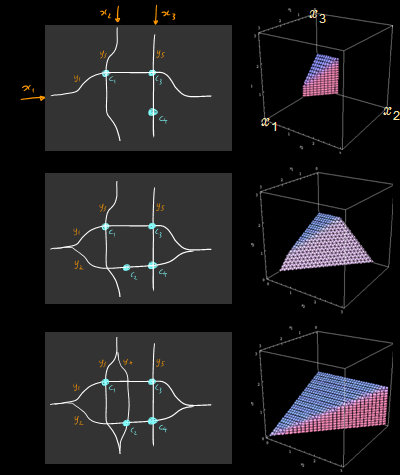Abstract.
What would the Internet be like, if the software running on your
computer could choose over which route to send its data? In this talk
I will survey four different mathematical models for understanding the
consequences of routing flexibility.
There are many open questions about how these four types of model
should fit together.
- The idea of
generalized cut constraints expresses the fundamental
constraints which even the most flexibly routed network can't
avoid. It comes from basic linear programming.
- The
idea of resource pooling expresses what it means for the
software to make intelligent routing choices—namely that certain
resources in the network should not be allowed to go underutilized. It
stems from heavy traffic queueing theory.
- The slogan the power of two choices says that most of the
benefits of flexible routing can be achieved even when each user has
only a small amount of choice. This theory comes from classic Markov
chain analysis.
- The concept of the Wardrop equilibrium, including
Braess's paradox, exposes some of the perverse outcomes that can arise
when users make selfish choices.
In fact, the Internet does have mechanisms for route choice, but they
have never worked properly and today most network operators disable
the mechanisms. We may hope that the theory can be properly understood
and applied to produce workable mechanisms.

This shows three different versions of the same network, with increasing
levels of routing flexibility. In the bottom picture, the horizontal flow
can choose the top path or the bottom path; the left vertical flow has
a choice of two paths; the right vertical flow has no choice. The
plots on the right hand side show how much capacity can be carried on
each of the three routes without overloading the network. The more
routing flexibility in the network, the more traffic can be carried.
